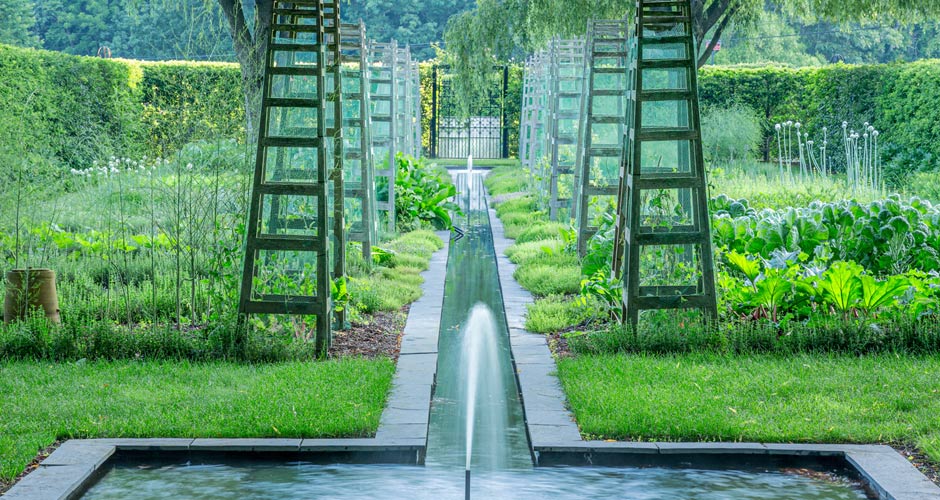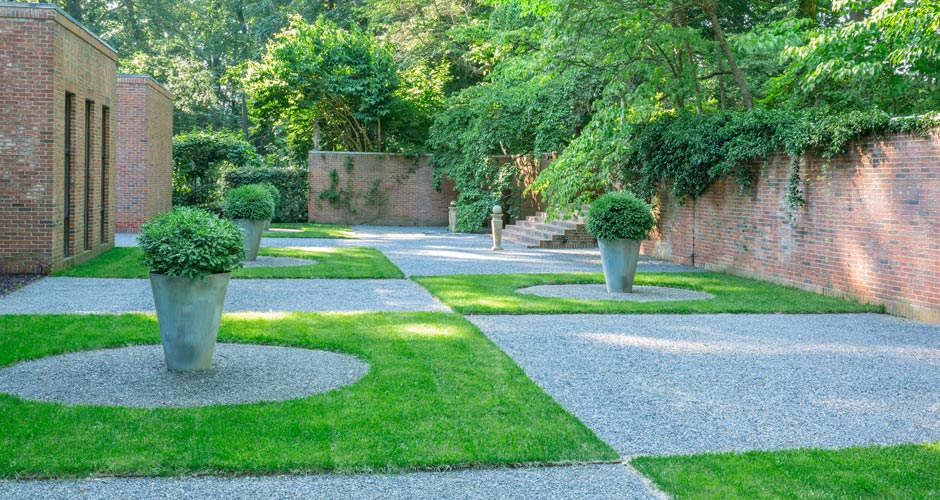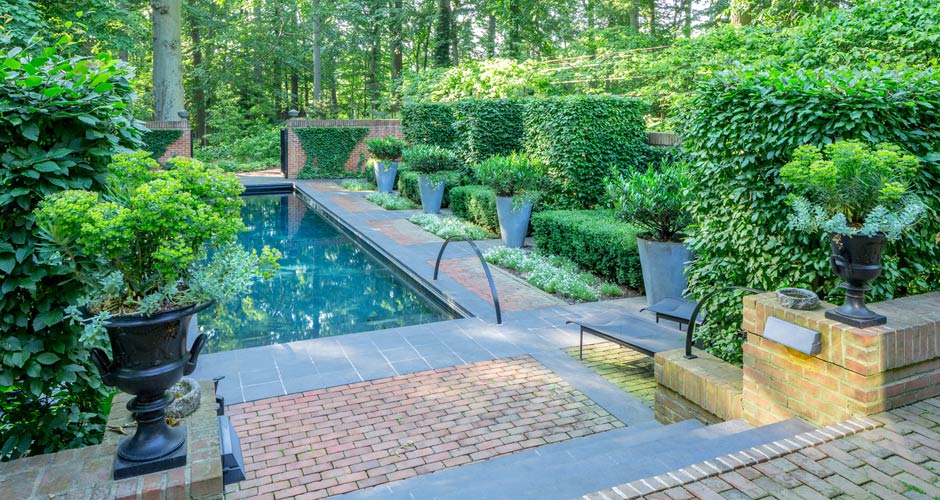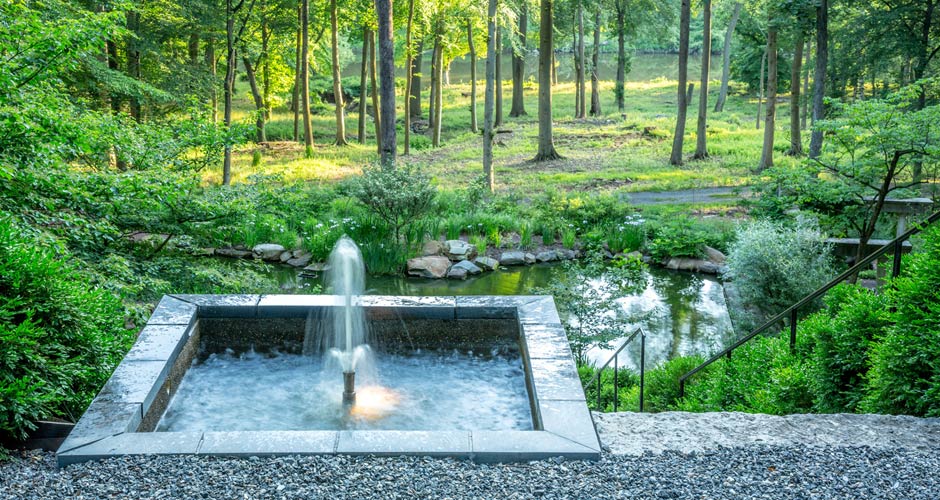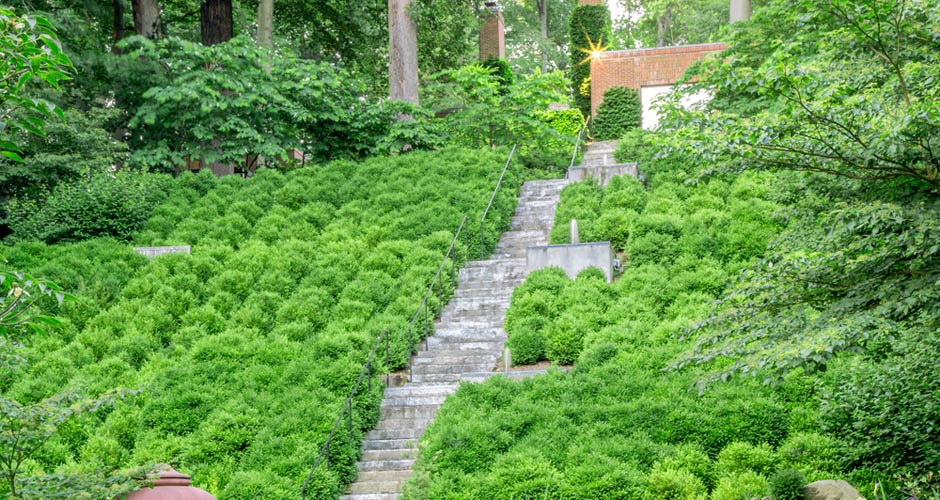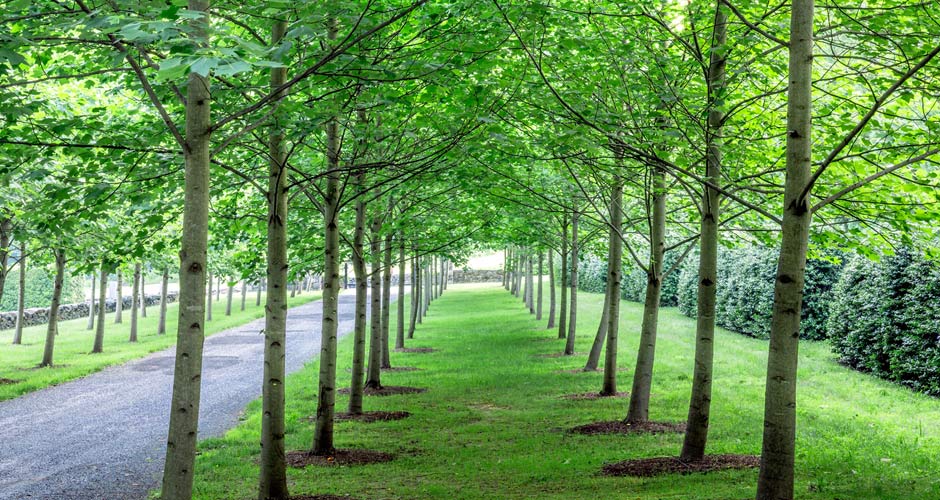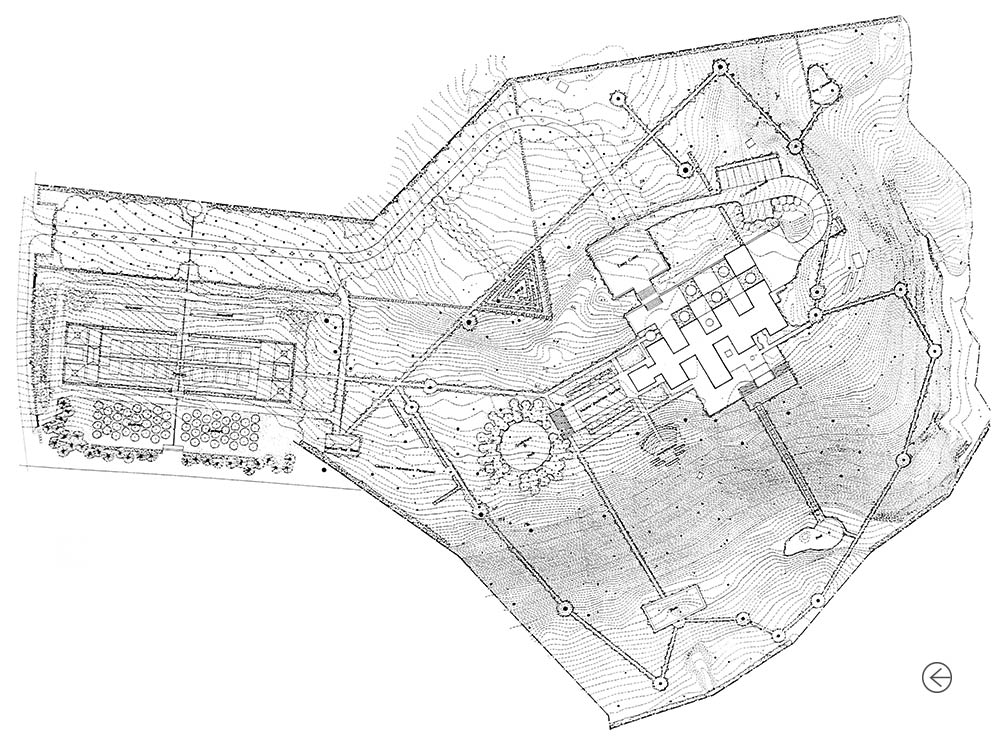The last residential commission that was fully realized before Kiley’s death in 2004 was Patterns, the garden of Governor Pierre S. “Pete” du Pont IV and his wife Elise. The design for the house and the garden was inspired by Amy Lowell’s poem “Patterns.” Kiley, was convinced by Elise du Pont to come out of retirement to create a master plan for the estate. The extensive Rockland, Delaware, site overlooking the Brandywine River was designed as a series of themed gardens.
Set within a wooded valley, the design for Patterns incorporates the landscape of native beech, oak and poplar forest, into a series of geometric spaces. The site is characterized by steep terrain, which is traversed by steps and paths. A long entry drive, lined along its initial stretch with a double allée of native poplar set fourteen-feet on center transitions to a single allée a little less than halfway down its length. Kiley’s design reflects Lowell’s poem through patterned paving that reappears throughout the site; in a gravel, brick and granite walk lined by stainless steel planters extending from the rear of the house; a grass and granite checkerboard court; and in a walled patio surrounding the home’s lap pool.
Adjacent to the entry drive is a 12,000 square-foot garden potager, enclosed by a nine-foot high holly hedge. The potager, which sits along a cut slope, is centered upon a 12-inch wide runnel that bisects the linear garden. At each end of the runnel is a 12-foot square pool, each shaded by a steel trellis. During growing season rows of wooden tuteurs are covered in vegetable vines, and rectangular beds overflow with produce, tall willow trees stand at each end of the garden providing a shady retreat from the summer sun.
Formal gardens abut the Modernist residence designed in 1964 by architect Ike W. Colburn. Behind the house, a gravel dining terrace is perched above a steep hillside planted with three varieties of boxwood. The slope is bisected by a staircase, alongside which Kiley placed a set of tiered fountain basins. At the bottom of the slope adjacent to the woodland sits) a man-made pond and a faux ruin of broken columns laced with flowering vines.
Within the woodland that surrounds the house and formal gardens Kiley created a series of pathways lined by allées, connecting the largest of the native trees. Historic stone walls helped determine the location and alignment of the pathways, and were also incorporated into a triangular maze. In many places Kiley removed the native undergrowth, opening up views through the woodland.
When Kiley returned to retirement his former collaborator Peter Morrow Meyer was enlisted by Elise du Pont to continue to fine-tune the site. While Kiley’s design was constructed in phases between 1992 and 1998, Morrow continued his work on the gardens until 2012. The four season garden continues to evolve through the work and ongoing stewardship of its owner.
Browning, Dominique, “Dan Kiley and Elise Du Pont at ‘Patterns,’” Slow Love Life, April 12, 2011, http://www.slowlovelife.com/2011/04/elise-du-pont-dan-kiley-at-patterns.html.
Foundation for Landscape Studies. “Place Maker Award 2012,” http://www.foundationforlandscapestudies.org/place_maker/2012_place_maker_award.php.
Janjigian, Robert, “Elise du Pont shares passion for gardening during annual Garden Club lecture,” Palm Beach Daily News, February 10, 2012, http://www.palmbeachdailynews.com/news/news/elise-du-pont-shares-passion-for-gardening-during-/nMFY5/.
The Cultural Landscape Foundation. “What’s Out There: Patterns,” https://tclf.org/landscapes/patterns.
Kiley, Dan and Jane Amidon. Dan Kiley: The Complete Works of America’s Master Landscape Architect (Boston, New York, London: Little, Brown and Company, 1999), 200-201.


